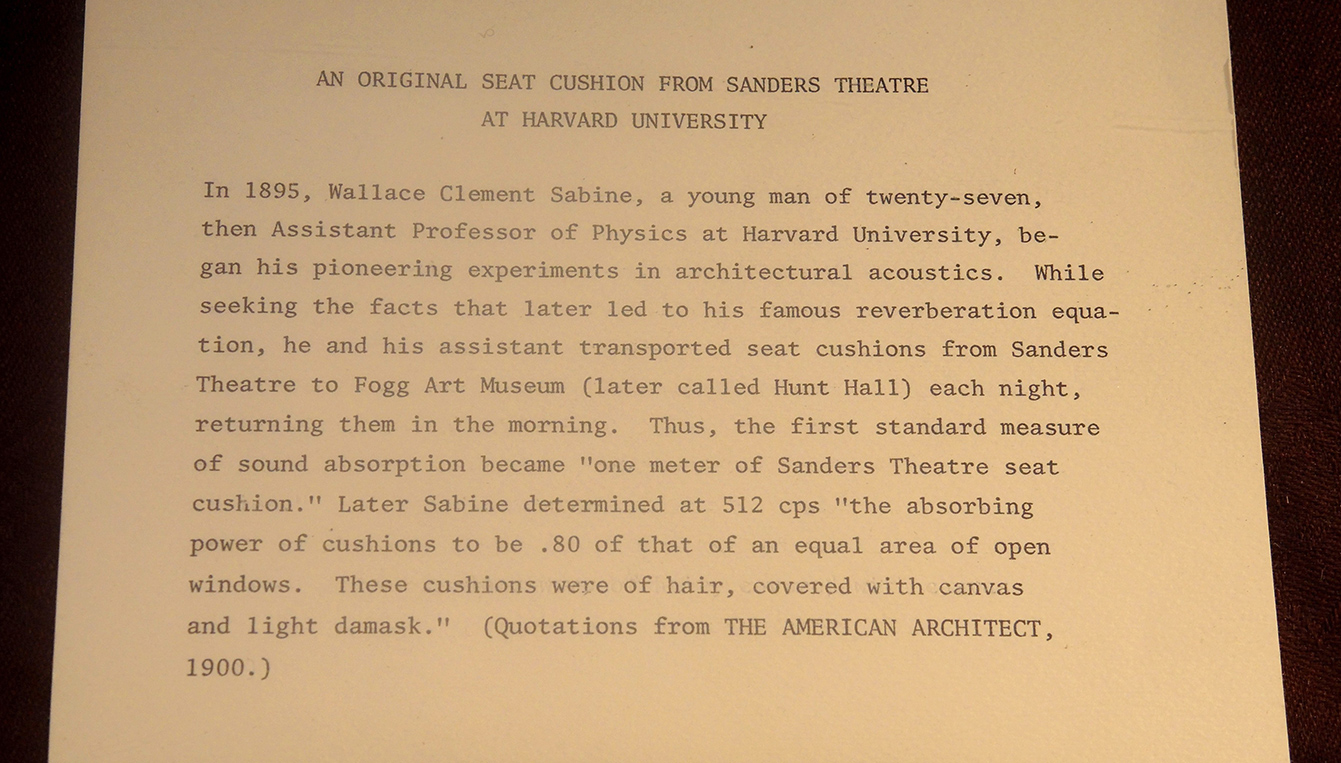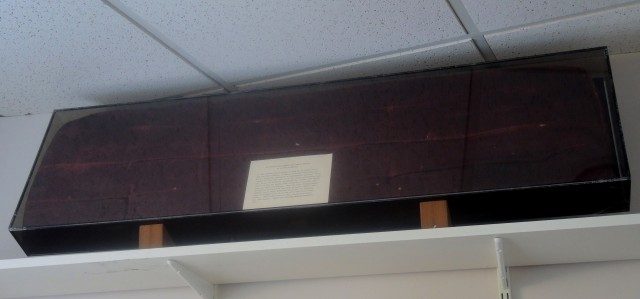Benjamin Markham
President

In the architectural acoustics community, the story of Wallace Clement Sabine is well known: he developed his famous (and eponymous) reverberation time equation based on research he did trying to improve the acoustics of a lecture hall at Harvard University’s original Fogg Art Museum. Acentech has an important historical artifact from that story: to our knowledge, it is one of the few original Sanders Theatre seat cushions still in existence today. What does an old seat cushion have to do with the founding of the field of architectural acoustics? Here is a brief retelling of the story.
When the first Fogg Art Museum building was built in 1894, it was not well liked. In particular, a 400+ seat lecture hall with a semicircular form quickly developed a reputation for terrible acoustics. Charles Eliot Norton – the founder of the first course in art history in the United States and a lecturer in the fine arts – complained to his cousin, Harvard’s president, Charles Eliot. And Charles Eliot turned to Sabine, then only 27 years old and new to the Harvard physics faculty, to solve the problem.
The work that Sabine undertook is the first serious scientific work in the field of room acoustics. While seeking the facts that later led to his famous reverberation time equation, he and his assistant transported seat cushions from Sanders Theatre – a well-liked and nearby space at Harvard that is now home to a wide range of performances and large lectures – to the notorious lecture hall at the Fogg each night, returning the seat cushions to Sanders Theatre each morning. Sabine conducted his tests between 2:00am and 6:00am in order to avoid the screeching noise of the Harvard Square streetcars.
Sabine discovered that when he fired a starter’s pistol in the room, the impulsive sound would not linger as long when the room was full of Sanders Theatre seat cushions. It was from these experiments that the first standard measure of acoustical absorption was equal to “one meter of Sanders Theatre seat cushion.” Later, Sabine determined (at 512 Hz) “the absorbing power of cushions to be 0.80 of that of an equal area of open windows. These cushions were of hair, covered with canvas and light damask” (The American Architect, 1900).
The lecture hall in the old Fogg Art Museum building (later renamed Hunt Hall) underwent various changes over the years, the last in 1972 at the recommendation of Robert Newman – a Harvard professor and a founder of Acentech’s erstwhile parent company, Bolt Beranek and Newman. In 1973, the building was demolished.
Sanders Theatre has undergone changes as well, including the replacement of its famous seat cushions. The seating in Sanders Theatre is in long benches, and the current cushions covered with Naugahyde or a similar leather or artificial leather seat covering. The local legend is that Bob Newman found a stash of old seat cushions in the Sanders Hall basement and saved one before the rest were hauled away to the dump.
Acentech keeps the seat cushion in a museum glass enclosure to protect it from light and from human hands. It is on display at our office in Cambridge, MA, a short distance from the site of Sabine’s pioneering work that founded our field. Let us know if you’d like to come see it and venerate it for yourself.
Below you can see a photo of our own little piece of acoustics history. Since we are in the process of renovating our offices, it is stored up high in our temporary workspace, keeping it well out of harm’s way.
